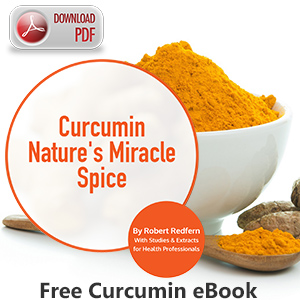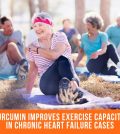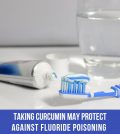Curcumin Update
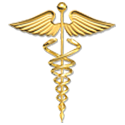 New Research on the Multiple Benefits of this Potent Health-Promoting, Disease-Fighting Agent
New Research on the Multiple Benefits of this Potent Health-Promoting, Disease-Fighting Agent
By Dale Kiefer
From powerful heart medications and antibiotics to simple aspirin, many modern pharmaceuticals have been derived  directly from ancient plant and fungal sources that exhibit remarkable abilities to improve well being and intervene in disease processes at the molecular level. Scientists continue to discover medically useful plant compounds that demonstrate powerful anti-inflammatory, anticancer, antibiotic, and anti-aging properties. Turmeric is a case in point. This tropical root delivers a smorgasbord of powerful health benefits. New research shows that turmeric—and its main bioactive compound, Curcumin—has the power to block inflammation, stop cancer, kill infectious microbes, and improve heart health.
directly from ancient plant and fungal sources that exhibit remarkable abilities to improve well being and intervene in disease processes at the molecular level. Scientists continue to discover medically useful plant compounds that demonstrate powerful anti-inflammatory, anticancer, antibiotic, and anti-aging properties. Turmeric is a case in point. This tropical root delivers a smorgasbord of powerful health benefits. New research shows that turmeric—and its main bioactive compound, Curcumin—has the power to block inflammation, stop cancer, kill infectious microbes, and improve heart health.
Turmeric is perhaps most familiar as the star ingredient in powdered curry mixes. Curcumin, a group of polyphenolic plant pigments, is responsible for turmeric’s characteristic canary yellow colour. Curry is the signature seasoning and fragrant dish of the Indian subcontinent.
India’s relationship with turmeric, and thus Curcumin, goes back thousands of years. Both ginger and turmeric have been cultivated in India and southeast Asia for millennia. India produces and consumes most of the world’s turmeric. The ancient Romans and Greeks, who valued its medicinal properties, revered a cousin of ginger, turmeric. Indeed, its English name derives from its Latin moniker, which roughly translates as “earth-merit.”
Unlike their Western counterparts, most native Indians would probably not be surprised to learn that modern science has begun to investigate and catalogue turmeric’s various health-promoting properties. Turmeric is familiar to Indians not only as a spice but also as an important element of folk medicine. In the ancient Indian system of Ayurvedic holistic medicine, turmeric is revered for its ability to quell inflammation and to treat a variety of maladies. Indeed, Ayurvedic medicine recommends mixing turmeric in a small amount of honey for the treatment of numerous ailments. It is taken orally at the first sign of the common cold, and the sticky paste is applied to the skin as a topical ointment for the treatment of skin infections and irritations.
Turmeric powder also is a popular remedy for stomach complaints throughout Asia. In Hawaii, it is reportedly used to treat swimmer’s ear (infection) and sinus infections. Perhaps one of its most important applications is as an anti-inflammatory for the treatment of arthritis; it has been used as such in China and India for thousands of years.
Modern Science Meets Ancient Faith
Modern scientists have examined these largely faith-based claims and have subjected them to rigorous testing over the last 50 years. Although few large-scale human trials have been completed, hundreds of experiments conducted by researchers around the globe have demonstrated Curcumin’s ability to halt or prevent certain types of cancer,1-20 stop inflammation, 21-26 improve cardiovascular health, 27-31 prevent cataracts, 32 kill or inhibit the toxic effects of certain microbes including fungi 33 and dangerous parasites, 34, 35 and protect, at least in the laboratory, against the damaging effects of heterocyclic amines (potentially carcinogenic compounds found in some cooked foods). 36 As one investigative team declared: “[Curcumin] has been proven to exhibit remarkable anti-carcinogenic, anti-inflammatory, and antioxidant properties.” 37
As if that were not enough, this hard-working spice shows promise as a potential treatment for multiple sclerosis, 38 and may ameliorate the damaging effects of long-term diabetes. 39 It is even being investigated as a topical treatment to speed diabetic wound healing. 37 Some researchers also have noted an exciting link between turmeric consumption and a dramatically decreased incidence of Alzheimer’s disease, an effect that may well be related to Curcumin’s ability to block signalling pathways that lead to inflammation. 40, 41
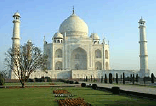 Cancer-Fighting Capabilities Documented Numerous studies published in peer-reviewed medical journals detail Curcumin’s ability to protect against cancer. In addition to its capacity to intervene in the initiation and growth of cancer cells and tumours—and to prevent their subsequent spread throughout the body by metastasis—Curcumin also has been shown to increase cancer cells’ sensitivity to certain drugs commonly used to combat cancer, rendering chemotherapy more effective in some cases. 1-20 much research has focused on Curcumin’s anti-inflammatory properties, and some new research suggests that Curcumin may protect the heart and circulatory system, 21-31 and prevent the onset of Alzheimer’s disease. 40, 41 Still other studies have examined Curcumin’s potential ability to counteract the effects of fungal toxins in the food supply, 33 and to protect the eyes from cataracts 32 and uveitis, 42 an inflammation of a portion of the eye that may result in glaucoma.
Cancer-Fighting Capabilities Documented Numerous studies published in peer-reviewed medical journals detail Curcumin’s ability to protect against cancer. In addition to its capacity to intervene in the initiation and growth of cancer cells and tumours—and to prevent their subsequent spread throughout the body by metastasis—Curcumin also has been shown to increase cancer cells’ sensitivity to certain drugs commonly used to combat cancer, rendering chemotherapy more effective in some cases. 1-20 much research has focused on Curcumin’s anti-inflammatory properties, and some new research suggests that Curcumin may protect the heart and circulatory system, 21-31 and prevent the onset of Alzheimer’s disease. 40, 41 Still other studies have examined Curcumin’s potential ability to counteract the effects of fungal toxins in the food supply, 33 and to protect the eyes from cataracts 32 and uveitis, 42 an inflammation of a portion of the eye that may result in glaucoma.
Turmeric Patent Granted and Revoked
Several years ago, two expatriate Indians associated with the University of Mississippi Medical Center filed for a US patent on turmeric. The patent was granted in 1995, but after an outcry from an Indian agriculture group, it was promptly revoked.
Fifty protesters challenged the patent’s validity on the grounds that turmeric is a previously available product that has been used medicinally in Asia for centuries. Since “novelty” is a condition of patent protection, it was determined that turmeric is not subject to such protection. The patent was revoked.
As an anticancer agent, Curcumin is promising enough to warrant serious attention from the National Cancer Institute (NCI). In its 2002 annual report, the Chemo preventive Agent Development Research Group, a subset of the NCI’s Division of Cancer Prevention, details its efforts to encourage and support research on Curcumin’s utility in cancer prevention and treatment. Because Curcumin is a non-patentable product (see sidebar), such support is crucial, especially for research involving all-important human trials, as other sources of funding are virtually nonexistent. At least one human trial, focusing on dosing, bioavailability, and pharmacokinetics (how Curcumin is used, metabolized, and eliminated by the body), is under way at the University of Michigan Comprehensive Cancer Centre. Other Curcumin studies have been proposed to the NIC and are awaiting approval.
Test-tube and animal-model studies have demonstrated that Curcumin exhibits significant anti-cancer activity. Numerous experiments have shown that Curcumin inhibits the progression of chemically induced colon and skin cancers. In colon cancer, in particular, Curcumin seems to significantly inhibit both the promotional and progression stages of the disease. Various studies have reported that Curcumin reduces the number and size of existing tumours, and decreases the incidence of new tumour formation.
Much discussion lately has focused on the use of cyclooxygenase-2 (COX-2) inhibitors—such as the prescription medications Celebrex® and Vioxx®—as potential colon cancer preventive agents. This new approach arose from the observation that people who routinely take anti-inflammatory non-steroidal drugs (NSAIDs) are statistically less likely to develop cancer than those who do not. Unfortunately, NSAIDs are poorly tolerated by some and can even cause bleeding in the gastrointestinal tract. Regarding Curcumin’s potential benefits for the prevention and treatment of colon cancer, one research team commented: “Naturally occurring COX-2 inhibitors such as Curcumin and certain phytosterols have been proven to be effective as chemo preventive agents against colon carcinogenesis with minimal gastrointestinal toxicity.” 18
Additionally, other studies using cancer cells grown in the laboratory in vitro have demonstrated Curcumin’s ability to prompt apoptosis, or programmed cell death, among leukaemia, B lymphoma, and other cancerous cells. Curcumin has been used as a topical application to successfully induce apoptosis in skin cancer cells both in vitro and in animal models. Curcumin is under investigation as a preventive agent for increasingly common non-melanoma skin cancers, and as a potential preventive or treatment agent in breast, prostate, oral, pancreatic, and gastric cancers, among others. 1-21 One researcher understated the matter, noting, “…Curcumin…should be considered for further development as [a] cancer preventive agent.” 43
Curcumin also has been shown to enhance the effectiveness of certain anti-cancer drugs, and, amazingly, to  potentially improve the effectiveness of anti-cancer radiation treatment by preventing tumour cells from developing radiation resistance. 33 Protein kinase C (PKC) has been suggested as a possible mechanism by which tumour cells develop resistance to radiation therapy.
potentially improve the effectiveness of anti-cancer radiation treatment by preventing tumour cells from developing radiation resistance. 33 Protein kinase C (PKC) has been suggested as a possible mechanism by which tumour cells develop resistance to radiation therapy.
Curcumin’s helpful effect may be due to its ability to inhibit radiation-induced PKC activity. Additionally, one study found that Curcumin protected study animals from the tumour-producing effects of deadly gamma radiation, 44 while another found that it protects against damaging ultraviolet light, which is known to play a role in the development of skin cancer. 8
Earlier this year, researchers at the University of Texas M.D. Anderson Cancer Centre declared: “…Curcumin has enormous potential in the prevention and treatment of cancer.” They noted that Curcumin has been found to be safe for human consumption, even in doses ranging as high as 10 grams per day.10 But other researchers have observed that more is not necessarily better. A recently published study out of India found that among rats fed a diet causing high blood sugar, those given low doses of Curcumin did not develop experimentally induced cataracts as often as control subjects. But rats receiving high doses of Curcumin actually developed cataracts somewhat faster, possibly due to increased oxidative stress. The difference in dosing was extreme, but these findings underscore the importance of further inquiry into the uses of Curcumin in humans for a variety of diseases and under a variety of conditions.
Contrary to the many remarkably encouraging reports on Curcumin’s anti-cancer benefits, at least one study reported that Curcumin interfered with, rather than potentiated, the effects of anti-cancer chemotherapy. 19 Another study found no significant therapeutic effect against prostate cancer, 20 a finding that stands in stark contrast to numerous other studies that have noted significant anti-prostate cancer activity by curcumin. 12,13 This lack of consensus has led some experts to caution against taking Curcumin during chemotherapy, except under an oncologist’s supervision.
Heart Health Benefits
Some of the most intriguing new research on Curcumin’s potential benefits involves its apparent ability to improve cardiovascular health. As with many of Curcumin’s protective actions, this ability to improve circulatory system function may be due to its powerful antioxidant activity. Late last year, several reports detailed Curcumin’s ability to protect test animals against a variety of conditions that model heart disease in humans.
Researchers in Egypt noted that Curcumin protected rats from oxidative stress injury following experimentally induced stroke. Stroke is a common result of thrombosis and/or atherosclerosis, which leads to clogging of the arteries that supply the brain with vital oxygen and nutrients. It is believed that such injury, known as ischemia/reperfusion (I/R) insult, is responsible for many of the deficits seen in stroke victims. Researchers concluded that Curcumin protected the rats from I/R damage. They noted that when Curcumin was administered at the highest levels, injury-related oxidants, believed to be responsible for the majority of I/R damage, were significantly reduced. 46
Among the Reactive Oxygen Species (ROS) whose levels or activities were reduced by Curcumin were xanthine oxidase, superoxide anion, malondialdehyde, glutathione peroxidase, superoxide dismutase, and lactate dehydrogenase. As most readers of Life Extension already know, scientists attribute many of the undesirable effects of aging to the rogue activities of damaging free radicals, and antioxidants are crucial for their control. As noted previously, Curcumin is a powerful antioxidant and many of its beneficial effects may be directly related to its ability to scavenge and neutralize these ROS.
Positive Effects on Cholesterol
In laboratory tests on animals and in vitro, scientists have shown that Curcumin prevents lipid peroxidation and the oxidation of cellular and sub cellular membranes that are associated with atherosclerosis. 27,28,30,31,47 Moreover, Curcumin acts to lower total cholesterol levels. Perhaps even more important, it prevents peroxidation of LDL (“bad”) cholesterol. LDL peroxidation plays a key role in the development of atherosclerosis, so it follows that a substance that inhibits peroxidation should benefit cardiovascular health.
 Atherosclerosis is a common disorder associated with aging, diabetes, obesity, and a diet high in saturated fat. It begins gradually, as cholesterol and other lipids deposit on arterial walls and form damaging plaques. Oxidized lipids are suspected of playing a particularly damaging role in the progression of atherosclerosis. As plaques grow, vessel walls may eventually thicken and stiffen, restricting blood flow to target organs and tissues. Atherosclerosis is a major cause of heart disease and may also lead to stroke. When atherosclerotic plaques restrict blood flow to the heart, depriving cardiac muscle of vital oxygen and nutrients, coronary tissue dies. Angina and heart attack are the result. Since Curcumin is a naturally occurring, well-tolerated antioxidant that is capable of destroying the dangerous free radicals that lead to lipid peroxidation, it would appear that it holds enormous potential in the fight against heart disease.
Atherosclerosis is a common disorder associated with aging, diabetes, obesity, and a diet high in saturated fat. It begins gradually, as cholesterol and other lipids deposit on arterial walls and form damaging plaques. Oxidized lipids are suspected of playing a particularly damaging role in the progression of atherosclerosis. As plaques grow, vessel walls may eventually thicken and stiffen, restricting blood flow to target organs and tissues. Atherosclerosis is a major cause of heart disease and may also lead to stroke. When atherosclerotic plaques restrict blood flow to the heart, depriving cardiac muscle of vital oxygen and nutrients, coronary tissue dies. Angina and heart attack are the result. Since Curcumin is a naturally occurring, well-tolerated antioxidant that is capable of destroying the dangerous free radicals that lead to lipid peroxidation, it would appear that it holds enormous potential in the fight against heart disease.
Still more intriguing than its ability to limit peroxidation is the finding that Curcumin raises HDL (“good”) cholesterol levels, even as it reduces LDL levels. In a small study of human volunteers, researchers reported a highly significant 29% increase in HDL among subjects who consumed one-half gram (500 mg) of Curcumin per day for seven days. Subjects also experienced a decrease in total serum cholesterol of more than 11%, and a decrease in serum lipid peroxides of 33%. 48 Further human studies are needed, but these preliminary findings are promising. As one research team noted: “Administration of a nutritional dose of C. longa extracts [Curcumin]…may contribute to the prevention of effects caused by a diet high in fat and cholesterol in blood and liver during the development of atherosclerosis.” 27
Although scientific investigation into the therapeutic properties of Curcumin is ongoing, it seems clear that this plant pigment from a humble tuber has powerful healing potential. The data are occasionally conflicting, but it seems likely that adding Curcumin to one’s diet makes exceptionally good sense. Curcumin appears to prevent certain cancers, inhibit cardiovascular disease, and quell inflammation, and may even offer protection against Alzheimer’s disease. Because it has been consumed safely by millions of people literally for millennia, the choice to supplement one’s diet regularly with Curcumin would seem to be a no-brainer. One word of caution, however: the gut poorly absorbs Curcumin. Its absorption and bioavailability are significantly enhanced by the addition of addition of plant extracts known as phytosomes bound to phosphatidylcholine (PC). When this is orally ingested, it’s easily absorbed into the body. 49
References
-
Chan MM, Fong D, Soprano KJ, Holmes WF, Heverling H. Inhibition of growth and sensiti- zation to cisplatin-mediated killing of ovarian cancer cells by polyphenolic chemopreventive agents. J Cell Physiol. 2003 Jan;194(1):63-70.
-
Navis I, Sriganth P, Premalatha B. Dietary Curcumin with cisplatin administration modu- lates tumor marker indices in experimental fibrosarcoma. Pharmacological Research. 1999 Mar;39(3):175-79.
-
Ichiki K, Mitani N, Doki Y, Hara H, Misaki T, Saiki I. Regulation of activator protein-1 activity in the mediastinal lymph node metas- tasis of lung cancer. Clin Exp Metastasis. 2000;18(7):539-45.
-
Bharti AC, Donato N, Singh S, Aggarwal BB. Curcumin (diferuloylmethane) down-regu- lates the constitutive activation of nuclear fac- tor-kappa B and IkappaBalpha kinase in human multiple myeloma cells, leading to suppression of proliferation and induction of apoptosis. Blood. 2003 Feb;101(3):1053-62.
-
Lin JK, Chen YC, Huang YT, Lin-Shiau SY. Suppression of protein kinase C and nuclear oncogene expression as possible molecular mechanisms of cancer chemoprevention by apigenin and Curcumin. J Cell Biochem Suppl. 1997;28-29:39-48.
-
Cheng AL, Hsu Ch, Lin JK, et al. Phase I clini- cal trial of Curcumin, a chemopreventive agent, in patients with high-risk or pre-malig- nant lesions. Anticancer Res. Jul-Aug 2001;21(4B):2895-2900.
-
Miyoshi N, Nakamura Y, Ueda Y, et al. Dietary ginger constituents, galanals A and B, are potent apoptosis inducers in Human T lymphoma Jurkat cells. Cancer Lett. 2003 Sep 25;199(2):113-9.
-
Chan WH, Wu CC, Yu JS. Curcumin inhibits UV-induced oxidative stress and apoptotic biochemical changes in human epidermoid carcinoma A431 cells. J Cell Biochem. Oct 2003;90(2):327-38.
-
Menon LG, Kuttan R, Kuttan G. Antimeta- static activity of Curcumin and catechin. Cancer Lett 1999 Jul 1;141(1-2):159-65.
-
Aggarwal BB, Kumar A, Bharti AC. Anticancer potential of Curcumin: preclinical and clinical studies. Anticancer Res. Jan-Feb 2003;23(1A):363-98.
-
Ikezaki S, Nishikawa A, Furukawa F, et al. Chemopreventive effects of Curcumin on glandular stomach carcinogenesis induced by N-methyl-N-nitro-N-nitrosoguanidine and sodium chloride in rats. Anticancer Res. 2001 Sep-Oct;21(5):3407-11.
-
Dorai T, Cao YC, Dorai B, Buttyan R, Katz AE. Therapeutic potential of Curcumin in human prostate cancer. III. Curcumin inhibits proliferation, induces apoptosis, and inhibits angiogenesis of LNCaP prostate can- cer cells in vivo. Prostate. 2001 Jun 1;47(4):293-303.
-
Nakamura K, Yasunaga Y, Segawa T, et al. Curcumin down-regulates AR gene expres- sion and activation in prostate cancer cell lines. Int J Oncol. 2002 Oct;21(4):825-30.
-
Hour TC, Chen J, Huang CY, Guan JY, Lu SH, Pu YS. Curcumin enhances cytotoxicity of chemotherapeutic agents in prostate can- cer cells by inducing p21(WAF1/CIP1) and C/EBPbeta expressions and suppressing NF- kappaB activation. Prostate. 2002 May 15;51(3):211-8.
-
Gururaj AE, Belakavadi M, Venkatesh DA, Marme D, Salimath BP. Molecular mecha- nisms of anti-angiogenic effect of Curcumin. Biochem Biophys Res Commun. 2002 Oct 4;297(4):934-42.
-
Cheng PY, Wang M, Morgan ET. Rapid transcriptional suppression of rat Cyto- chrome P450 genes by endotoxin treatment and its inhibition by Curcumin. J Pharmacol Exp Ther. 2003 Oct 13 [Epub ahead of print].
-
Ray SN, Chattopadhyay N, Mitra A, Siddiqi M, Chatterjee A. Curcumin exhibits anti- metastatic properties by modulating inte- grin receptors, collagenase activity, and expression of Nm23 and E-cadherin. J Environ Pathol Toxicol Oncol. 2003;22(1):49-58.
-
Reddy BS, Rao CV. Novel approaches for colon cancer prevention by cyclooxygenase-2 inhibitors. J Environ Pathol Toxicol Oncol 2002;21(2):155-64.
-
Somasundaram S, Edmund NA, Moore DT, Small GW, Shi YY, Orlowski RZ. Dietary Curcumin inhibits chemotherapy-induced apoptosis in models of human breast cancer. Cancer Res. 2002 Jul 1;62(13):3868-75.
-
Imaida K, Tamano S, Kato K, et al. Lack of chemopreventive effects of lycopene and Curcumin on experimental rat prostate car cinogenesis. Carcinogenesis. 2001 Mar;22(3):467-72.
-
Satoskar RR, Shah SJ, Shenoy SG. Evalua- tion of anti-inflammatory property of cur- cumin in patients with postoperative inflam mation. Int J Clin Pharmacol Ther Toxicol 1986 Dec;24(12):651-4.
-
Kulkarni RR, Patki PS, Jog VP, Gandage SG, Patwardhan B. Treatment of osteoarthritis with a herbomineral formulation: a double- blind, placebo-controlled, cross-over study. J Ethnopharmacol. 1991 May-Jun;33(1-2):91-5.
-
Arora RB, Basu N, Kapoor V, Jain AP. Anti-inflammatory studies on Curcuma- longa (turmeric). Ind J Med Res 1971 Aug;59(8):1289-95.
-
Deodhar SD, Sethi R, Srimal RC. Preliminary studies on antirheumatic activity of Curcumin (diferuloyl methane). Ind J Med Res. 1980 Apr;71:632-4.
-
Chan MM, Ho CT, Huang HI. Effects of three dietary phytochemicals from tea, rose- mary and turmeric on inflammation-induced nitrate production. Cancer Lett. 1995 Sep 4;96(1):23-9.
-
Ramsewak RS, DeWitt DL, Nair MG. Cytotoxicity, antioxidant and anti-inflamma- tory activities of curcumins I-III from Curcumalonga. Phytomedicine. Jul 2000;7(4):303-8.
-
Mesa MD, Aguilera CM, Ramirez-Tortosa CL, et al. Oral administration of a turmeric extract inhibits erythrocyte and liver micro- some membrane oxidation in rabbits fed with an atherogenic diet. Nutrition. Sep 2003;19(9):800-04.
-
Quiles JL, Aguilera C, Mesa MD, Ramirez- Tortosa MC, Baro L, Gil A. An ethanolic- aqueous extract of Curcuma longa decreases the susceptibility of liver microsomes and mitochondria to lipid peroxidation in atherosclerotic rabbits. Biofactors. 1998;8(1- 2):51-7.
-
Dikshit M, Rastogi L, Shukla R, Srimal RC. Prevention of ischaemia-induced biochemical changes by Curcumin & quinidine in the cat heart. Indian J Med Res. Jan 1995;101:31-5.
-
Ramirez-Tortosa MC, Mesa MD, Aguilera MC, et al. Oral administration of a turmeric extract inhibits LDL oxidation and has hypocholesterolemic effects in rabbits with experimental atherosclerosis. Atherosclerosis. Dec 1999;147(2):371-8.
-
Quiles JL, Mesa MD, Ramirez-Tortosa CL, et al. Curcuma longa extract supplementa- tion reduces oxidative stress and attenuates aortic fatty acid streak development in rab- bits. Arterioscler Thromb Vasc Biol. Jul 2002 Jul 1;22(7):1225-31.
-
Suryanarayana P, Krishnaswamy K, Reddy GB. Effects of Curcumin on galactose-induced cataractogenesis in rats. Mol Vis. 2003 Jun 9;9:223-30.
-
Galvano F, Piva A, Ritieni A, Galvano G. Dietary strategies to counteract the effects of mycotoxins: a review. J Food Prot. Jan 2001;64(1)120-31.
-
Koide T, Nose M, Ogihara Y, Yabu Y, Ohta N. Leishmanicidal effects of Curcumin in vitro. Biol Pharm Bull. 2002 Jan;25(1):131-3.
-
Saleheen D, Ali SA, Ashfaq K, Siddiqui AA, Agha A, Yasinzai MM. Latent activity of cur- cumin against leishmaniasis in vitro. Biol Pharm Bull. 2002 Mar;25(3):386-9.
-
Shishu, Singla AK, Kaur IP. Inhibitory effect of Curcumin and its natural analogues on geneto toxicity of heterocyclic amines from cooked food. Indian J Exp Biol. Dec 2002 Dec;40(12):1365-72.
-
Phan TT, See P, Lee ST, Chan SY. Protective effects of Curcumin against oxidative damage on skin cells in vitro: its implication for wound healing. J Trauma. 2001 Nov;51(5):927-31.
-
Natarajan C, Bright JJ. Curcumin inhibits experimental allergic encephalomyelitis by blocking signaling through janus kinase- STAT pathway in T lymphocytes IL-12. J Immunol. 2002;168(12):6506-13.
-
Arun N, Nalini N. Efficacy of turmeric on blood sugar and polyol pathway in diabetic albino rats. Plant Foods Hum Nutr. 2002;57(1):41-52.
-
Lim GP, Chu T, Yang F, Beech W, Frautschy SA, Cole GM. The curry spice Curcumin reduces oxidative damage and amyloid pathology in an Alzheimer transgenic mouse. J Neurosci. 2001 Nov 1;21(21):8370-7.
-
Kim DS, Park SY, Kim JK. Curcuminoids from Curcuma longa L. (Zingiberaceae) that protect PC12 rat pheochromocytoma and normal human umbilical vein endothe- lial cells from beta(1-42) insult. Neurosci Lett. Apr 2001;303(1):57-61.
-
Lal B, Kapoor AK, Asthana OP, et al.
Efficacy of Curcumin in the management of chronic anterior uveitis. Phytotherapy Res 1999;13:318–22. -
White EL, Ross LJ, Schmid SM, Kelloff GJ, Stelle VE, Hill DL. Screening of potential cancer preventing chemicals for induction of glutathionine in rat liver cells. Oncol Rep. 1998 Mar-Apr;5(2):507-12.
-
Inano H, Makota O. Prevention of radia tion-induced mammary tumors. Int J Radiat Oncol Biol Phys. 2002 Jan 1;52(1):212-23.
-
Inano H, Onoda M. Radioprotective action of Curcumin extracted from Curcuma longa LINN: inhibitory effect on formation of uri- nary 8-hydroxy-2’-deoxyguanosine, tumoro genesis, but not mortality, induced by gamma-ray irradiation. Int J Radiat Oncol Biol Phys. 2002 Jul 1;53(3):735-43.
-
Ghoneim AI, Abdel-Naim AB, Khalifa AE, El-Denshary ES. Protective effects of cur cumin against ischaemis-reperfusion insult in rat forebrain. Pharmacol Res. Sep 2002;46(3):273-9.
-
Sreejayan, Rao MN. Curcuminoids as potent inhibitors of lipid peroxidation. J Indian Physiol Pharmacol. Dec 1994;46(12):1013-6.
-
Soni KB, Kuttan R. Effects of Curcumin administration on serum peroxides and cholesterol levels in human volunteers. Indian J Physiol Pharmacol. Oct 1992;36(4):273-5.
-
Marczylo TH, Verschoyle RD, Cook DN, et al. Comparison of systemic availability of curcumin with that of curcumin formulated with phosphatidylcholine.Cancer Chemother Pharmacol 2007;60:171-177 (http://www.ncbi.nlm.nih.gov/pubmed/1705137)
-
Jayaraman KS. US patent office withdraws patent on Indian herb. Nature. 1997 Sep 4;389(6646):6.


